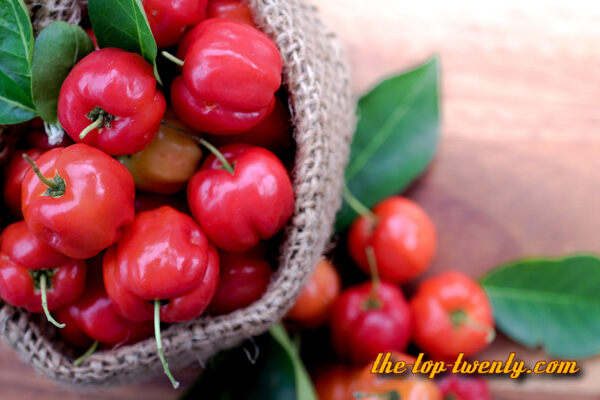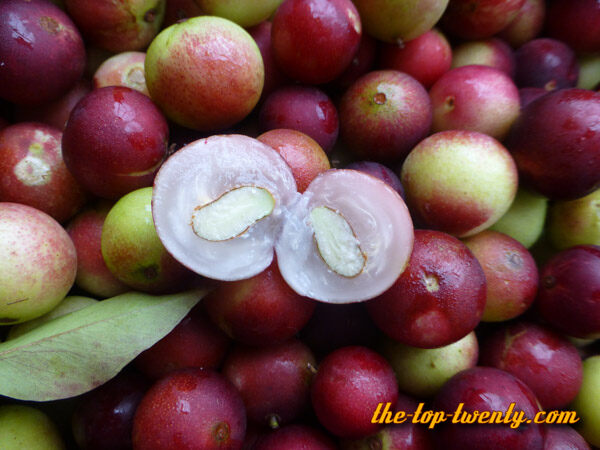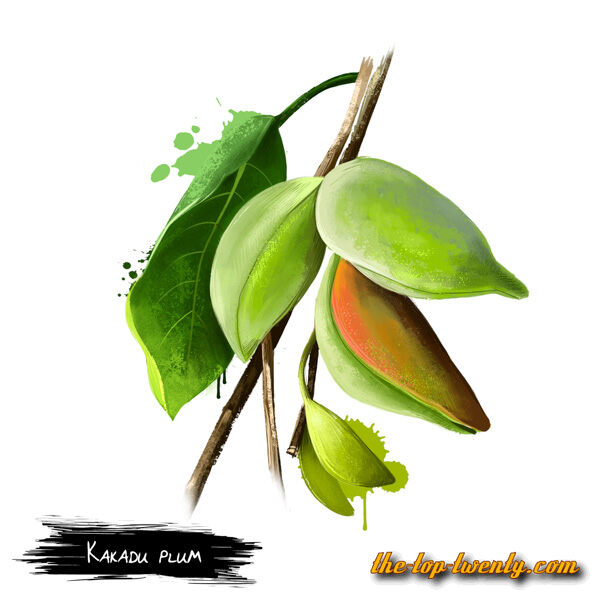
3. Acerola cherry – 1700 mg Vitamin C per 100g
Acerola is native to South America, southern Mexico, Puerto Rico, Dominican Republic, Haiti, Brazil, and Central America, but is now also being grown as far north as Texas and in subtropical areas of Asia, such as India. It is known for being extremely rich in vitamin C and also contains vitamins A, B1, B3, and B3, as well as carotenoids and bioflavonoids, which provide important nutritive value and have antioxidant uses.
Learn more about Acerola cherry

2. Camu-Camu – 2000 mg Vitamin C per 100g
Myrciaria dubia, commonly known as camu camu, is a small bushy riverside tree from the Amazon rainforest in Peru and Brazil, which grows to a height of 3–5 m (9.8–16.4 ft) and bears a red/purple cherry-like fruit. It is a close relative of the jabuticaba (Myrciaria cauliflora) and the guavaberry or rumberry (Myrciaria floribunda). As much as 2-3% of the fresh fruit by weight is vitamin C.
Learn more about Camu-Camu (Myrciaria dubia)

1. Gubinge/Kakadu Plum – 2700 mg Vitamin C per 100g
The Gubinge is a flowering plant in the family Combretaceae, native to Australia, widespread throughout the tropical woodlands from northwestern Australia to eastern Arnhem Land. The fruit is yellow-green, about 2 cm (0.79 in) long and 1 cm (0.39 in) in diameter, almond-sized with a short beak at the tip, and contain one large seed. They ripen from March onwards. It should not be confused with Planchonia careya, with which it shares some common names.












